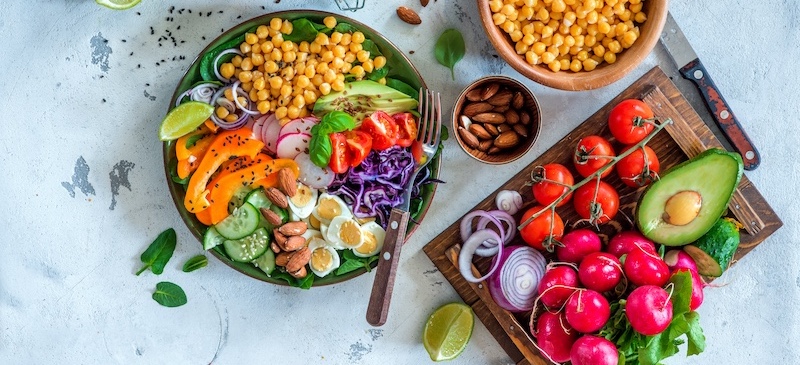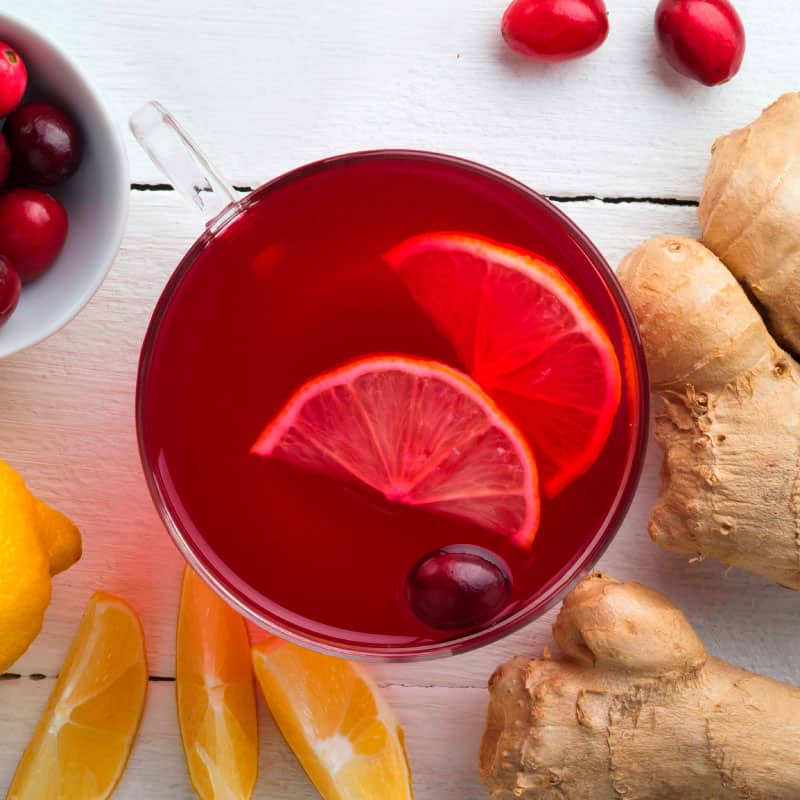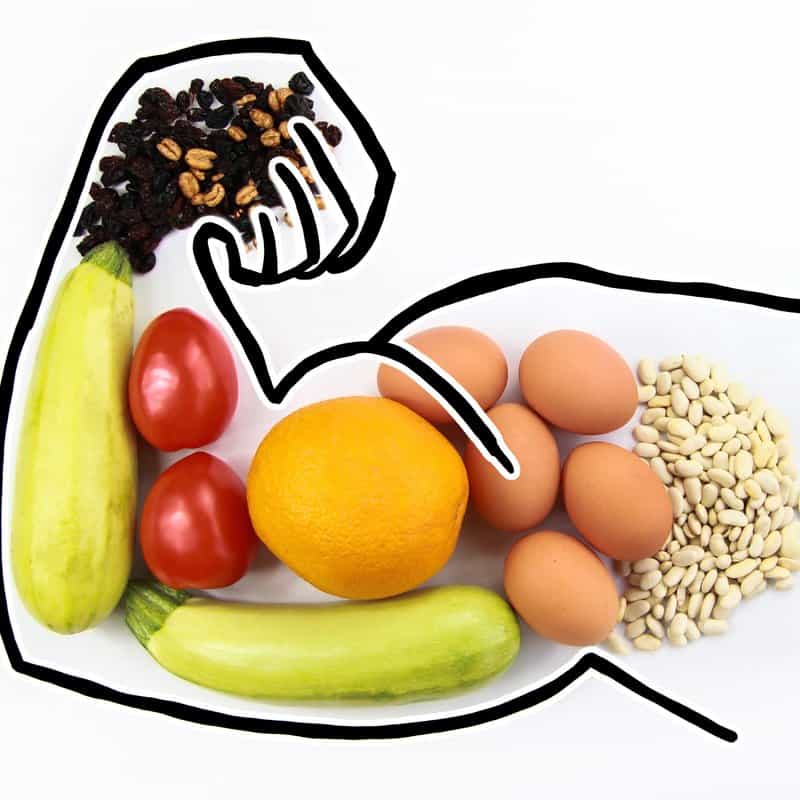This Dr. Axe content is medically reviewed or fact checked to ensure factually accurate information.
With strict editorial sourcing guidelines, we only link to academic research institutions, reputable media sites and, when research is available, medically peer-reviewed studies. Note that the numbers in parentheses (1, 2, etc.) are clickable links to these studies.
The information in our articles is NOT intended to replace a one-on-one relationship with a qualified health care professional and is not intended as medical advice.
This article is based on scientific evidence, written by experts and fact checked by our trained editorial staff. Note that the numbers in parentheses (1, 2, etc.) are clickable links to medically peer-reviewed studies.
Our team includes licensed nutritionists and dietitians, certified health education specialists, as well as certified strength and conditioning specialists, personal trainers and corrective exercise specialists. Our team aims to be not only thorough with its research, but also objective and unbiased.
The information in our articles is NOT intended to replace a one-on-one relationship with a qualified health care professional and is not intended as medical advice.
Eat the Rainbow: A Colorful Path to Better Health
April 11, 2025

You’ve probably heard the phrase “eat the rainbow,” but what does it really mean … and why is it such powerful advice?
This simple concept encourages you to include a variety of colorful fruits and vegetables in your diet each day. The idea is more than just pretty plates. Each color provides unique nutrients that support different aspects of your health.
In this guide, we’ll break down what “eat the rainbow” means, why it matters and how to make it part of your everyday life.
What does it mean to “eat the rainbow”?
Eating the rainbow means consuming a diverse range of colorful plant-based foods. Think red tomatoes, orange carrots, yellow bell peppers, green spinach, blueberries and purple cabbage.
These colors aren’t just for show. They reflect the presence of different phytonutrients, naturally occurring compounds in plants that offer a wide array of health benefits, from fighting inflammation to boosting brain function.
By including all the colors in your meals, you give your body a broader spectrum of vitamins, minerals and antioxidants it needs to thrive.
Health benefits
Eating a colorful variety of fruits and vegetables supports:
- Immune health
- Heart health
- Brain function
- Skin health
- Healthy digestion
- Reduced inflammation
- Lower risk of chronic diseases
Each color group brings something special to the table, and together they help protect the body from aging, disease and nutrient deficiencies.
Colors of the food rainbow
When you hear eat the rainbow, that means red, orange, yellow, green, blue and purple, along with white and brown foods. Here’s what you get from each color when you eat the rainbow:
Red
- Foods: Tomatoes, strawberries, red peppers, watermelon, cherries, beets
- Main phytonutrients: Lycopene, betalains
- Key vitamins/minerals: Vitamin C, potassium, folate, vitamin A, vitamin K, magnesium, manganese, potassium, vitamin B6
- Health benefits: Supports heart health, reduces cancer risk, boosts skin health
Tomatoes, red grapes, strawberries and red peppers contain lycopene, flavonoids and vitamin C, which are all linked to cardiovascular health.
Lycopene (primarily found in tomatoes) has been shown in randomized, controlled trials to reduce LDL cholesterol and improve vascular function. In one meta-analysis of human trials, lycopene supplementation significantly reduced systolic blood pressure and improved endothelial function.
Another 2017 meta-analysis of 14 observational studies found that higher lycopene exposure was associated with a 17 percent reduced risk of cardiovascular disease, including significant reductions in coronary heart disease and stroke risk. Meanwhile, a cohort study of more than 100,000 individuals also found that higher flavonoid intake from berries and red fruits correlated with a lower risk of coronary artery disease.
Red fruits and vegetables, such as tomatoes, pomegranates and red cabbage, also are rich in antioxidants and polyphenols. Pomegranate polyphenols, for instance, have shown anti-inflammatory and antiproliferative effects in human trials, particularly in reducing markers associated with breast and prostate cancers.
In human observational studies, high tomato and lycopene intake has been linked to a lower risk of prostate cancer as well. One prospective study followed men for over 10 years and found a strong inverse association.
A 2015 systematic review and meta-analysis involving over 17,000 prostate cancer cases indicated that higher lycopene consumption and circulating levels were associated with a reduced risk of prostate cancer, particularly at intakes between 9 and 21 mg/day. Additionally, a 1999 prospective analysis found that men with higher plasma lycopene levels had a lower risk of aggressive prostate cancer, with the strongest inverse association observed in those not taking beta-carotene supplements.
Red plant foods improve skin health via antioxidants as well. For example, lycopene from tomatoes has been found to protect against UV-induced skin damage and improve skin smoothness and texture.
In addition, vitamin C from strawberries and red peppers is essential for collagen synthesis. Clinical studies have shown that diets high in vitamin C improve skin hydration and elasticity.
Many red plant foods are nutrient-dense and anti-inflammatory foods as well. As such, diets rich in red fruits and vegetables have been associated in epidemiological studies with lower rates of chronic diseases, including type 2 diabetes, cardiovascular disease and cognitive decline.
Orange and yellow
- Foods: Carrots, sweet potatoes, oranges, mangoes, yellow squash, yellow peppers, bananas, pineapple, tangerines, pumpkin, winter squash, corn
- Main phytonutrients: Beta-carotene (converts to vitamin A), other carotenoids
- Key vitamins/minerals: Vitamin A, vitamin C, potassium, folate
- Health benefits: Promotes eye health, supports immune function, protects skin
Orange and yellow plant foods, such as carrots, sweet potatoes, pumpkins, mangoes and bell peppers, are rich in carotenoids like beta-carotene, lutein and zeaxanthin. These compounds have been studied in humans for their roles in promoting eye health, supporting immune function, protecting skin and enhancing overall well-being.
Lutein and zeaxanthin are carotenoids that accumulate in the retina, particularly in the macula, where they help filter harmful blue light and reduce oxidative stress. Epidemiological and clinical studies have linked higher dietary intake of these carotenoids with a reduced risk of age-related macular degeneration (AMD) and cataracts.
Additionally, beta-carotene, found abundantly in orange vegetables like carrots and pumpkins, is a precursor to vitamin A, essential for maintaining healthy vision. The National Eye Institute’s Age-Related Eye Disease Study demonstrated that a combination of antioxidants, including beta-carotene, can slow the progression of AMD.
Beta-carotene is converted into vitamin A in the body, a nutrient crucial for maintaining the integrity of skin and mucosal cells, which serve as the first line of defense against pathogens. Vitamin A also plays a vital role in the development and differentiation of white blood cells, which are key players in the immune response.
Carotenoids contribute to skin health by providing photoprotection and improving skin appearance. A randomized, controlled trial found that oral supplementation with carotenoids, including lutein and zeaxanthin, improved skin’s resistance to UV-induced damage and enhanced skin hydration and elasticity.
Studies have shown that increased consumption of carotenoid-rich fruits and vegetables leads to higher skin yellowness, which is perceived as a healthy glow. A randomized, crossover trial demonstrated that participants consuming high-carotenoid fruits and vegetables exhibited significant increases in skin yellowness over four weeks.
Carotenoids act as antioxidants, neutralizing free radicals and reducing oxidative stress, which is linked to chronic diseases. A comprehensive review highlighted that diets rich in carotenoids are associated with improved cognitive function, cardiovascular health and a reduced risk of certain cancers.
Green
- Foods: Spinach, broccoli, kale, peas, avocados, asparagus, green cabbage, Brussels sprouts, green herbs
- Main phytonutrients: Chlorophyll, lutein, indoles, isothiocyanates, glucosinolates
- Key vitamins/minerals: Vitamin K, folate, iron, magnesium, potassium, vitamin A
- Health benefits: Supports brain and bone health, detoxification, digestion, immunity
Green plant foods, such as leafy greens (spinach, kale, Swiss chard), cruciferous vegetables (broccoli, Brussels sprouts) and herbs, are rich in essential nutrients and bioactive compounds that support various aspects of human health.
Regular consumption of green leafy vegetables has been associated with slower cognitive decline. A study involving 960 participants found that those who consumed approximately 1.3 servings of green leafy vegetables per day experienced a slower rate of cognitive decline compared to those with lower intake.
This effect is attributed to nutrients like lutein, folate, beta-carotene and phylloquinone present in these vegetables.
Green vegetables are excellent sources of calcium, vitamin K and magnesium, all vital for bone health. Vitamin K, in particular, plays a crucial role in bone metabolism and has been linked to a reduced risk of fractures.
For instance, kale and spinach are rich in these nutrients, contributing to stronger bones and a lower risk of osteoporosis.
Cruciferous vegetables like broccoli contain sulforaphane, a compound that supports the body’s detoxification processes. Sulforaphane activates enzymes involved in detoxifying harmful substances, aiding in liver function and reducing oxidative stress.
Regular consumption of broccoli has been linked to enhanced detoxification and a lower risk of certain chronic diseases.
Green vegetables also are high in dietary fiber, which promotes healthy digestion by supporting regular bowel movements and fostering a beneficial gut microbiome. For example, the fiber content in broccoli aids in regulating bowel movements and maintaining digestive health.
The vitamins and antioxidants found in green vegetables bolster the immune system as well. Vitamin C enhances immune defense by supporting various cellular functions, while vitamin A maintains the integrity of mucosal surfaces.
Additionally, compounds like sulforaphane in broccoli have been shown to modulate immune responses and reduce inflammation.
Incorporating green vegetables into the diet contributes to overall health by reducing the risk of chronic diseases. Their rich nutrient profile supports cardiovascular health, aids in weight management and may lower the risk of certain cancers.
For instance, regular intake of leafy greens has been associated with a decreased risk of heart disease and type 2 diabetes.
Blue and purple
- Foods: Blueberries, eggplant, purple cabbage, blackberries, plums, Concord grapes, elderberries
- Main phytonutrients: Anthocyanins
- Key vitamins/minerals: Vitamin C, manganese, potassium, vitamin B6, vitamin K
- Health benefits: Improves memory, reduces inflammation, supports heart and brain health
Blue and purple plant foods, such as blueberries, blackberries, grapes and eggplants, are rich in anthocyanins, a class of flavonoids responsible for their vibrant hues. These compounds have been studied for their potential health benefits in humans, particularly concerning memory enhancement, inflammation reduction, cardiovascular and brain health, and overall well-being.
Anthocyanins can cross the blood-brain barrier and localize in brain regions associated with learning and memory. Research has indicated that their antioxidant and anti-inflammatory properties may help preserve cognitive function and reduce the risk of neurodegenerative diseases.
For instance, one study reported that anthocyanins increased blood flow to and activated brain areas responsible for memory, language and attention.
Anthocyanins exhibit anti-inflammatory effects by modulating pathways involved in the body’s inflammatory response. This action can help mitigate chronic inflammation, which is linked to various health conditions, including heart disease and cognitive decline.
Consumption of anthocyanin-rich foods has been associated with improved cardiovascular health. These compounds may help lower blood pressure, reduce LDL cholesterol levels and enhance vascular function, thereby decreasing the risk of heart disease.
Regular intake of blue and purple fruits and vegetables contributes to overall health by providing essential nutrients and antioxidants. These foods support immune function, aid in weight management and may reduce the risk of chronic diseases, such as type 2 diabetes and certain cancers.
White and brown
- Foods: Garlic, onions, cauliflower, mushrooms, leeks, daikon radish, parsnips, white potatoes
- Main phytonutrient: Allicin (in garlic and onions), flavonoids, anthoxanthins
- Key vitamins/minerals: Potassium, vitamin K, folate, magnesium, manganese, vitamin B6
- Health benefits: Supports immune function, balances cholesterol, provides anti-inflammatory effects
White and brown plant foods, such as garlic, onions, mushrooms, oats, brown rice and legumes, are rich in bioactive compounds like allicin, beta-glucans and dietary fiber. Human studies have shown that these foods support immune function, balance cholesterol, reduce inflammation and promote overall health.
Research has relayed, for example, that a diet rich in whole grains can increase beneficial gut bacteria and enhance immune responses, including higher levels of memory T cells, compared to refined grains.
Function mushroom varieties, like shiitake and reishi, contain compounds that have been linked to improved immune responses and reduced inflammation. Mushrooms also contain beta-glucans, which act as prebiotics promoting gut health and immune function.
They offer anti-inflammatory benefits due to antioxidants like L-ergothioneine, potentially reducing the risk of metabolic syndrome, as well. Rich in antioxidants, brown rice helps reduce oxidative stress and inflammation too.
Oats and barley are grains that are high in beta-glucans, which have been shown to lower LDL (“bad”) cholesterol levels. Regular intake of tree nuts also is linked to reductions in total and LDL cholesterol, contributing to improved lipid profiles and cardiovascular health.
Jicama is a root vegetable that is rich in inulin, a prebiotic fiber that supports gut microbiota and immune health. Its high vitamin C content and antioxidants help reduce inflammation and protect against heart disease.
Beans and legumes are associated with improved metabolic health, reduced obesity-related inflammation and enhanced immune responses. Their inclusion in diets supports cardiovascular and colon health.
As you can see, when you eat the rainbow, you not only consume a vast array of beneficial nutrients, but your body becomes more resilient in helping prevent chronic issues and boosting overall health.
How to eat the rainbow
Incorporating more colorful foods into your diet to eat the rainbow doesn’t have to be complicated. Try these strategies:
- Make your plate a palette: Aim for at least three to four different colors per meal.
- Smoothie boost: Toss in berries, spinach, carrots or even beets.
- Rainbow salads: Mix leafy greens with cherry tomatoes, shredded carrots, red cabbage and sliced bell peppers.
- Colorful snacks: Choose fruits like oranges, grapes or apple slices with nut butter.
- Plan by color: If you notice one color is missing from your meals, make a point to add it the next day in order to eat the rainbow.
Additional tips in order to eat the rainbow
- Shop seasonally: Seasonal produce tends to be fresher, cheaper and more flavorful.
- Go for whole foods: Fresh or frozen fruits and veggies are best. Limit canned varieties with added sugars or sodium.
- Try new produce: Step out of your comfort zone with things like dragon fruit, rainbow chard or purple sweet potatoes.
- Prep ahead: Wash, chop and store a variety of veggies so they’re easy to grab and go.
- Involve the family: Make it a game to “collect” every color in a week.
Conclusion
- When you eat the rainbow, you do more than just brighten your plate; you fuel your body with the diverse nutrients it craves.
- Each color offers its own unique set of health benefits, and together they form a powerful nutritional team.
- Start small, get creative and enjoy the journey to a more vibrant, healthier you when you eat the rainbow.









